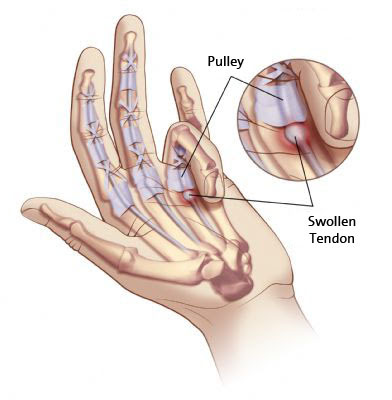

Consultant Plastic and Reconstructive Surgeon

Consultant Plastic and Reconstructive Surgeon
Trigger finger is a painful condition in which a finger or thumb clicks or locks as it is bent towards the palm.

Thickening of the mouth of a tendon tunnel leads to roughness of the tendon surface, and the tendon then catches in the tunnel mouth. People with insulin-dependent diabetes are especially prone to triggering, but most trigger digits occur in people without diabetes. Triggering occasionally appears to start after an injury such as a knock on the hand.
Trigger finger and trigger thumb are not harmful but can be a really painful nuisance. Some mild cases recover over a few weeks without treatment. The options for treatment are:
If the trigger finger is not released surgically, then the involved finger(s) will progressively become more rigid and contracted and eventually, the patient will not be able to extend the finger at all. If many fingers are involved, loss of function of the entire hand may occur.
Free video/face to face consultation
with consultant plastic surgeon
Please fill in your details and we will get back to you.